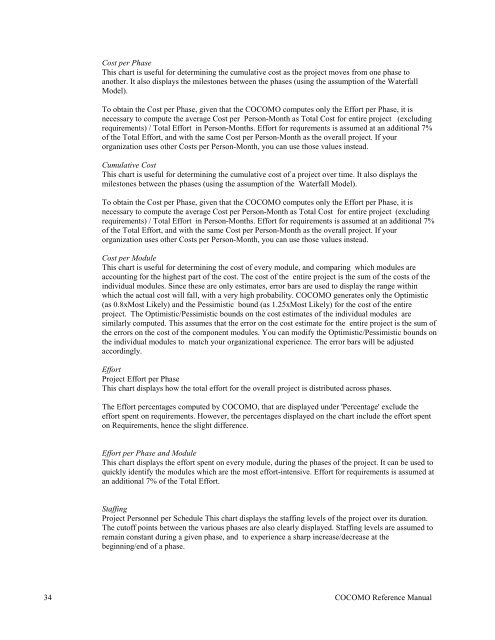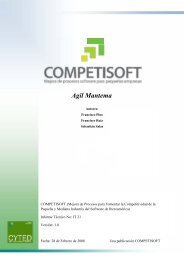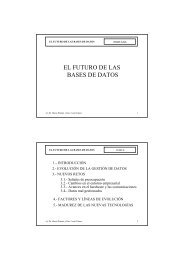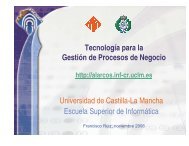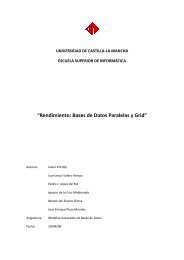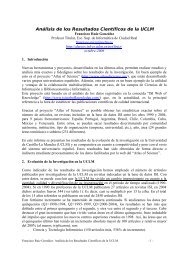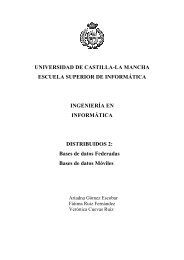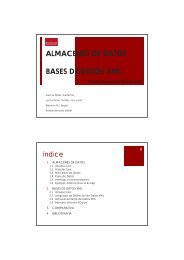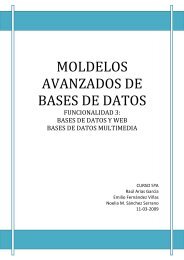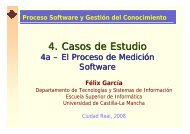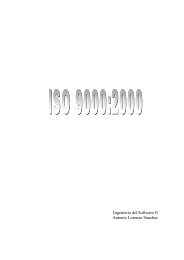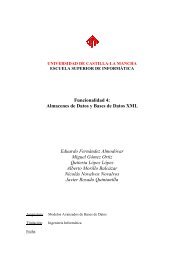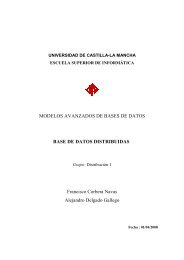USC COCOMOII - FTP - University of Southern California
USC COCOMOII - FTP - University of Southern California
USC COCOMOII - FTP - University of Southern California
Create successful ePaper yourself
Turn your PDF publications into a flip-book with our unique Google optimized e-Paper software.
Cost per Phase<br />
This chart is useful for determining the cumulative cost as the project moves from one phase to<br />
another. It also displays the milestones between the phases (using the assumption <strong>of</strong> the Waterfall<br />
Model).<br />
To obtain the Cost per Phase, given that the COCOMO computes only the Effort per Phase, it is<br />
necessary to compute the average Cost per Person-Month as Total Cost for entire project (excluding<br />
requirements) / Total Effort in Person-Months. Effort for requrements is assumed at an additional 7%<br />
<strong>of</strong> the Total Effort, and with the same Cost per Person-Month as the overall project. If your<br />
organization uses other Costs per Person-Month, you can use those values instead.<br />
Cumulative Cost<br />
This chart is useful for determining the cumulative cost <strong>of</strong> a project over time. It also displays the<br />
milestones between the phases (using the assumption <strong>of</strong> the Waterfall Model).<br />
To obtain the Cost per Phase, given that the COCOMO computes only the Effort per Phase, it is<br />
necessary to compute the average Cost per Person-Month as Total Cost for entire project (excluding<br />
requirements) / Total Effort in Person-Months. Effort for requirements is assumed at an additional 7%<br />
<strong>of</strong> the Total Effort, and with the same Cost per Person-Month as the overall project. If your<br />
organization uses other Costs per Person-Month, you can use those values instead.<br />
Cost per Module<br />
This chart is useful for determining the cost <strong>of</strong> every module, and comparing which modules are<br />
accounting for the highest part <strong>of</strong> the cost. The cost <strong>of</strong> the entire project is the sum <strong>of</strong> the costs <strong>of</strong> the<br />
individual modules. Since these are only estimates, error bars are used to display the range within<br />
which the actual cost will fall, with a very high probability. COCOMO generates only the Optimistic<br />
(as 0.8xMost Likely) and the Pessimistic bound (as 1.25xMost Likely) for the cost <strong>of</strong> the entire<br />
project. The Optimistic/Pessimistic bounds on the cost estimates <strong>of</strong> the individual modules are<br />
similarly computed. This assumes that the error on the cost estimate for the entire project is the sum <strong>of</strong><br />
the errors on the cost <strong>of</strong> the component modules. You can modify the Optimistic/Pessimistic bounds on<br />
the individual modules to match your organizational experience. The error bars will be adjusted<br />
accordingly.<br />
Effort<br />
Project Effort per Phase<br />
This chart displays how the total effort for the overall project is distributed across phases.<br />
The Effort percentages computed by COCOMO, that are displayed under 'Percentage' exclude the<br />
effort spent on requirements. However, the percentages displayed on the chart include the effort spent<br />
on Requirements, hence the slight difference.<br />
Effort per Phase and Module<br />
This chart displays the effort spent on every module, during the phases <strong>of</strong> the project. It can be used to<br />
quickly identify the modules which are the most effort-intensive. Effort for requirements is assumed at<br />
an additional 7% <strong>of</strong> the Total Effort.<br />
Staffing<br />
Project Personnel per Schedule This chart displays the staffing levels <strong>of</strong> the project over its duration.<br />
The cut<strong>of</strong>f points between the various phases are also clearly displayed. Staffing levels are assumed to<br />
remain constant during a given phase, and to experience a sharp increase/decrease at the<br />
beginning/end <strong>of</strong> a phase.<br />
34 COCOMO Reference Manual


